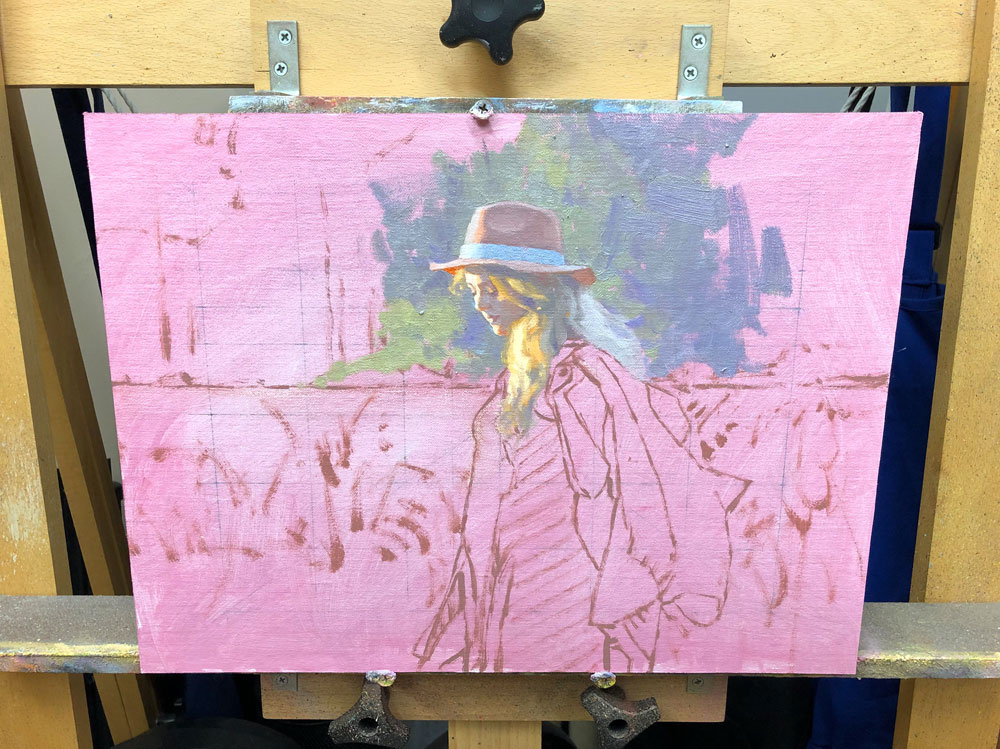
During the initial stages of my wet-into-wet process I add small amounts of solvent or oil to my paint mixtures. That way the colors flow off the brush more easily, allowing me to cover areas more quickly.
Solvent will evaporate from the painting, leaving just the paint on the canvas. For this reason it’s important not to add too much solvent to the paint. If the paint is diluted too much with solvent, there won’t be enough oil left to hold the paint film together once the solvent evaporates from the painting.
So if you like to paint very thinly, add a little walnut oil to your paint instead of solvent. The walnut oil will create a stronger paint film in thin layers than solvent. (Remember, walnut oil seems to be a better choice than linseed oil because of linseed oil’s tendency to yellow over time.)
From the midway point to the finish of any given painting, I don’t tend to add much thinner (either solvent or oil). I mostly use undiluted paint in those later stages. Working in this way, from thin to thick, is a time-honored system used by painters for ages.
On smaller paintings it’s effective to work on the entire surface at the same time from start to finish. But it can be quite a challenge to handle a large oil painting this way. The bigger size of large canvases makes it difficult to bring the whole surface to a finish before it dries.
A better approach I’ve found for myself with larger canvases is to start painting in a particular area (usually the center of interest) and work outward, finishing as I go. (See this example.) It takes some definite precision and care to make correct comparisons throughout this process. But in this manner I can stop for a break at any point and let that section dry. (As long as that particular section is complete and I didn’t make mistakes that will need repainting later.) After a break, even an extended one, I can pick up where I left off and work on the next section, continuing to complete areas as I go. When the canvas is fully covered, the painting is finished unless any corrections need to be made anywhere. It can be difficult to properly judge colors and values before the canvas is all filled in, but that’s part of the learning curve of this method of working outward.
I’ve found that either of the above approaches works well as long as I’m taking care to accurately compare values and colors as I go. So give it a try and see if the oil painting wet-into-wet process works for you.
